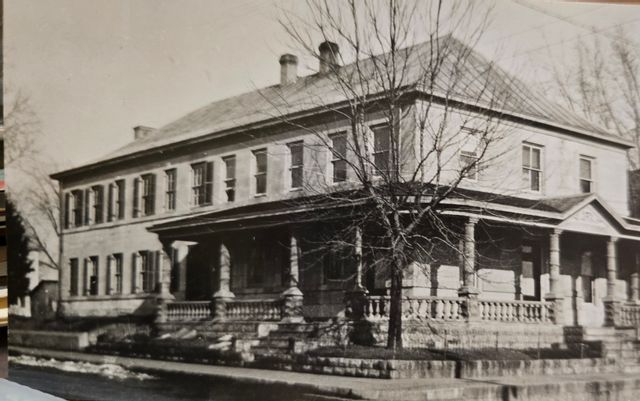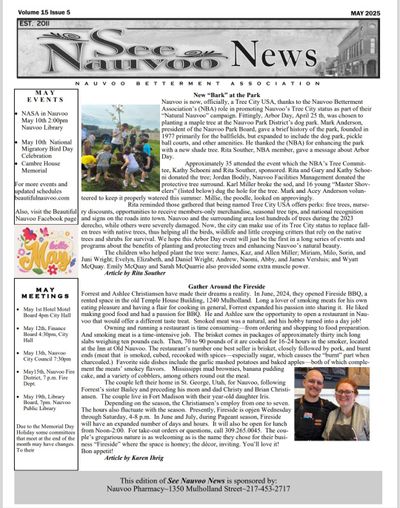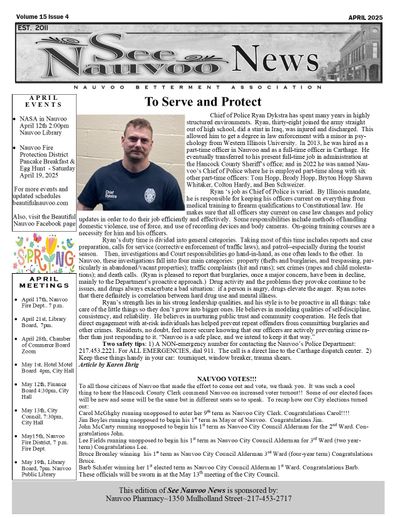Icaria
French communal society in Nauvoo

On March 15, 1849, another group of persecuted idealists landed in Nauvoo, hoping to make it their home. Their sight unseen purchase of land in Texas proved to be unhealthy and uninhabitable, so, following the recommendation of President-Elect Zachary Taylor, this small band moved up the Mississippi River seeking a place to establish a utopian community. These were followers of the twice-banished Frenchman, Etienne Cabet. The Icarian movement was not a religious organization, but rather a social and political commune, following the ideals set forth in the 1840 book by Etienne Cabet, Voyage en Icarie. Capturing many of the principals of Thomas Moore's Utopia, as well as those of the French Revolution of equality, liberty and brotherhood, Cabet's novel is said to at one point had more than 400,000 copies in print. Once established in Nauvoo, the Icarians, as they came to be called, had a following of 300, with a high in 1855 of 500. In spite of their uniqueness, their lack of interest in local politics and their small size allowed the initially uneasy local residents to welcome the commune to town. When Cabet made the purchase for the remains of the temple, half of the purchase funds for the property were put forward by their Hancock County neighbors. When Cabet, himself, had seen the nearly abandoned city, he became fascinated by the ruins of the Mormon temple, and determined to purchase the property even though many of his followers felt it too extravagant and expensive. Cabet had dreams of restoring the structure as a dining and lecture hall. Just as it had once been the marvel of the Upper Mississippi as a monument to the Mormon's industry, Cabet wanted it to be a grand memorial to the success of Icaria. On June 27, 1850, a group of carpenters was at work in the remains of the Mormon temple when a tornado struck the structure, causing the north wall to collapse inward on the party. In spite of the large number of workers on the job and virtually no advanced warning, not a single person was harmed. Prospects for the reconstruction of the temple now being crushed, Cabet called his people together and inspired them to build another building on the block that they could use for the same purposes. Although not nearly as large or grand as the Mormon temple, the Icarian School stood for more than 100 years, being used variously as a schoolhouse, apartments, dance hall, theatre, and visitor's center. Emblazoned on the walls of the new school was the Icarian motto: From each according to his talent; to each according to his needs. Hoping to create a community that would be completely self-reliant, the Icarians established farms and factories, manufacturing shoes, boots, harnesses, and wagons. Woodworkers and carpenters filled their numbers, as did tailors, coopers, vintners and printers. The women of the community took in washing, sewing, and were engaged in linen making and ironing. The commune was never able to meet all of their needs, however, and Cabet was often absent on fund raising tours. In May of 1851, Cabet learned that he had been indicted in France for swindling money from French investors in the commune, and on the 21st of that month he left Nauvoo, determined to clear his name. After two days in French court, Cabet had proven his innocence. While in France, he began to involve himself in politics again, and in the December coup he was arrested as a political agitator and imprisoned. After a few months Cabet was banished again, and he returned to Nauvoo just over a year after he left it. Cabet's absence and the financial difficulties oft caused rifts into how the commune should be governed. The difficult financial circumstances meant that food became scarce, and at one point an Icarian wrote that pork and beans were the staple of the group. The attrition caused by these circumstances brought a rapid turnover in membership. Each boat that brought new members to Nauvoo also departed with an equal number of former members. In December of 1855 Cabet saw that he was loosing power and influence in the movement and sought an amendment to the Icarian Charter, allowing the president to be elected to a four-year term instead of an annual one. This proposal was in opposition to many of the Icarian ideals and in the February 1856 election of officers, Cabet was voted out. Immediately Cabet offered to drop his proposed amendment, and the community welcomed his humility and the next day cast another vote, this time electing Cabet back into the president's chair. The peace did not last in the society, and additional disagreements and charges of mismanagement brought the dissident party into control of the governing board in August of 1856. Etienne Cabet refused to allow the new board members to take their seat, so the dissidents called on Nauvoo Mayor E. Kimball for assistance. Only by the assistance of the town marshal were the new board members able to obtain their office. The next two months were a time of great struggle in Icaria. As the society began to break up, scuffles ensued over work details, arguments occurred in the meal lines, and children fought at school. Finally, Cabet told his minority that they should refuse to work, but continue to go to the community meals. After three days, the new leadership of Icaria told the minority to begin working or not attend meals. Challenging the majority, Cabet led his followers to the dining hall which they found locked. Returning with axes, the group broke open the doors and a bloody fight ensued. At last the majority prevailed, and Cabet and his followers were forced to take up residence elsewhere in Nauvoo. In being ousted from the Icarian apartments, Cabet took with him all of the society's account and record books. In the middle of October, the Icarian General Assembly expelled Etienne Cabet, the founder of Icaria, from the society. His hopes now dashed for the Nauvoo society, Cabet retreated with a few of his most loyal followers to St. Louis, where the heart-broken leader died on November 8, 1856. Back in Nauvoo, Jean Baptiste Gerard was elected to replace Cabet as president, and he immediately set about to solve the commune's financial woes. The fighting of the previous year had caused a complete work stoppage in Icaria, and fields that had been neglected that summer now yielded very little. Orders for Icarian products went unfilled, and merchants were forced to take their business elsewhere. Then in 1857 another great financial depression occurred, and creditors demanded payment of the society's debts. The dream of utopia in Nauvoo was gone, and in August of 1858, all Icarian property there was sold at auction. Many members of the movement in Nauvoo relocated to other settlements in Iowa or California, but some remained in the once proud community. Arriving in the Icarian commune in 1855, Emile Baxter and his family remained in Nauvoo while the society dissipated, began a family winery, today the oldest in Illinois, and eventually produced his own variety of grape, called the Noah or Nauvoo. Others who remained were the architect for the Illinois and Iowa State Capitol buildings. The Dadant family was also among the Icarian commune. Specializing in honeybees, the Dadants saved many of the US varieties of honeybee during a great blight in the 1930's, and founded what is now the largest beekeepers supply business in the world. Today the memory of the Icarian movement is kept alive through the National Icarian Society. Western Illinois University in Macomb has taken up the task of gathering all Icarian documents and has established the Center for Icarian Studies, making all of the society's information available to researchers in one location.






